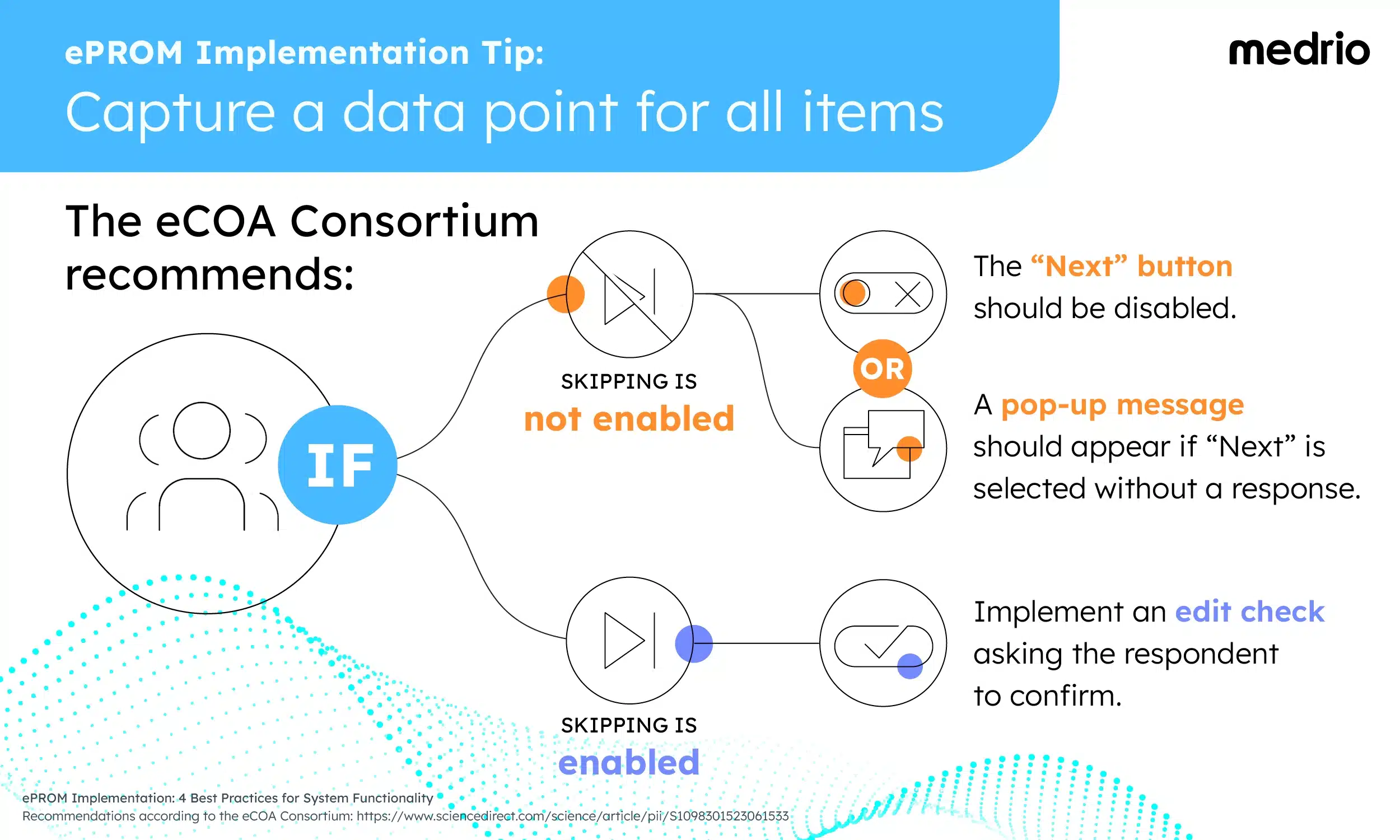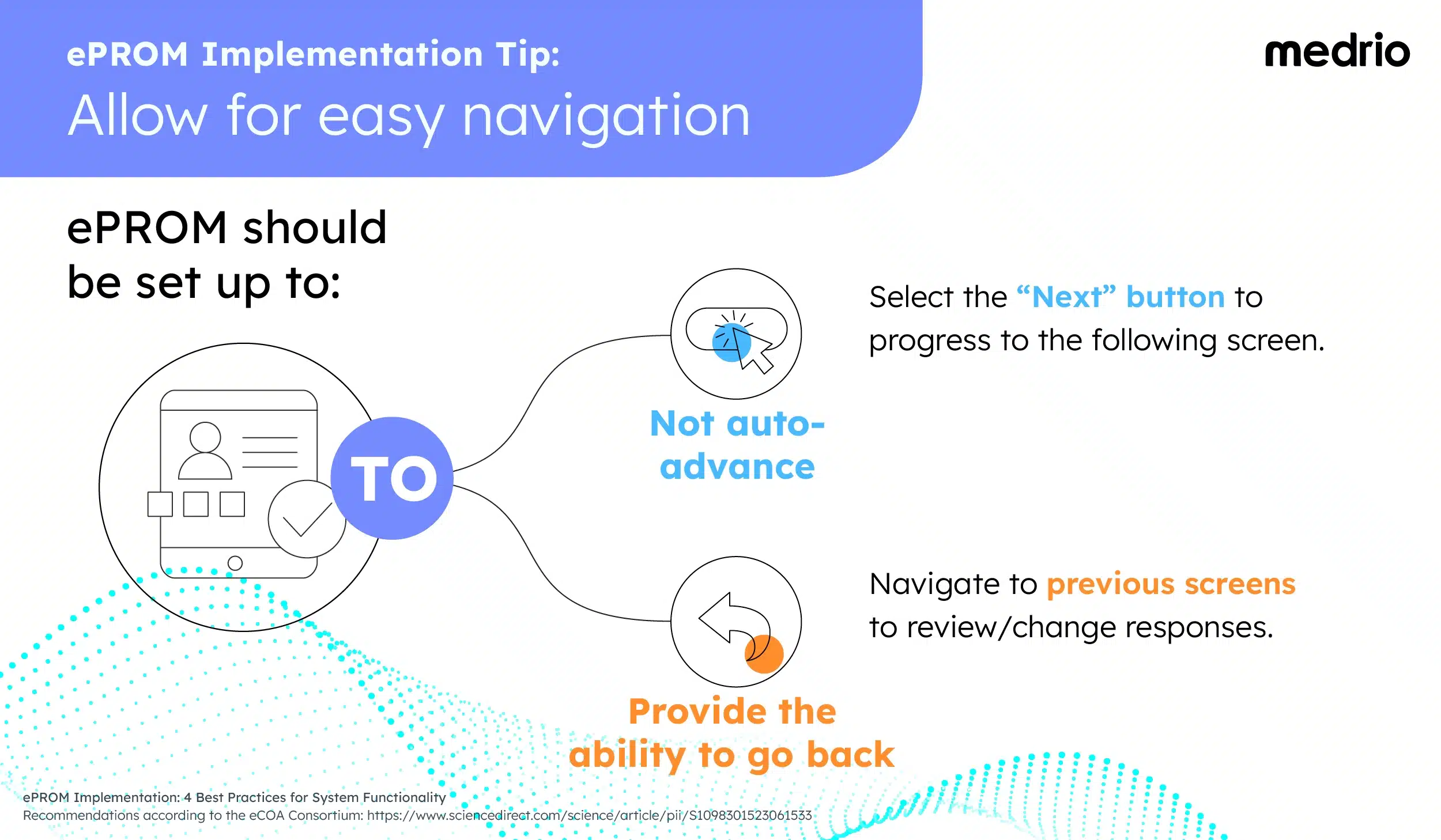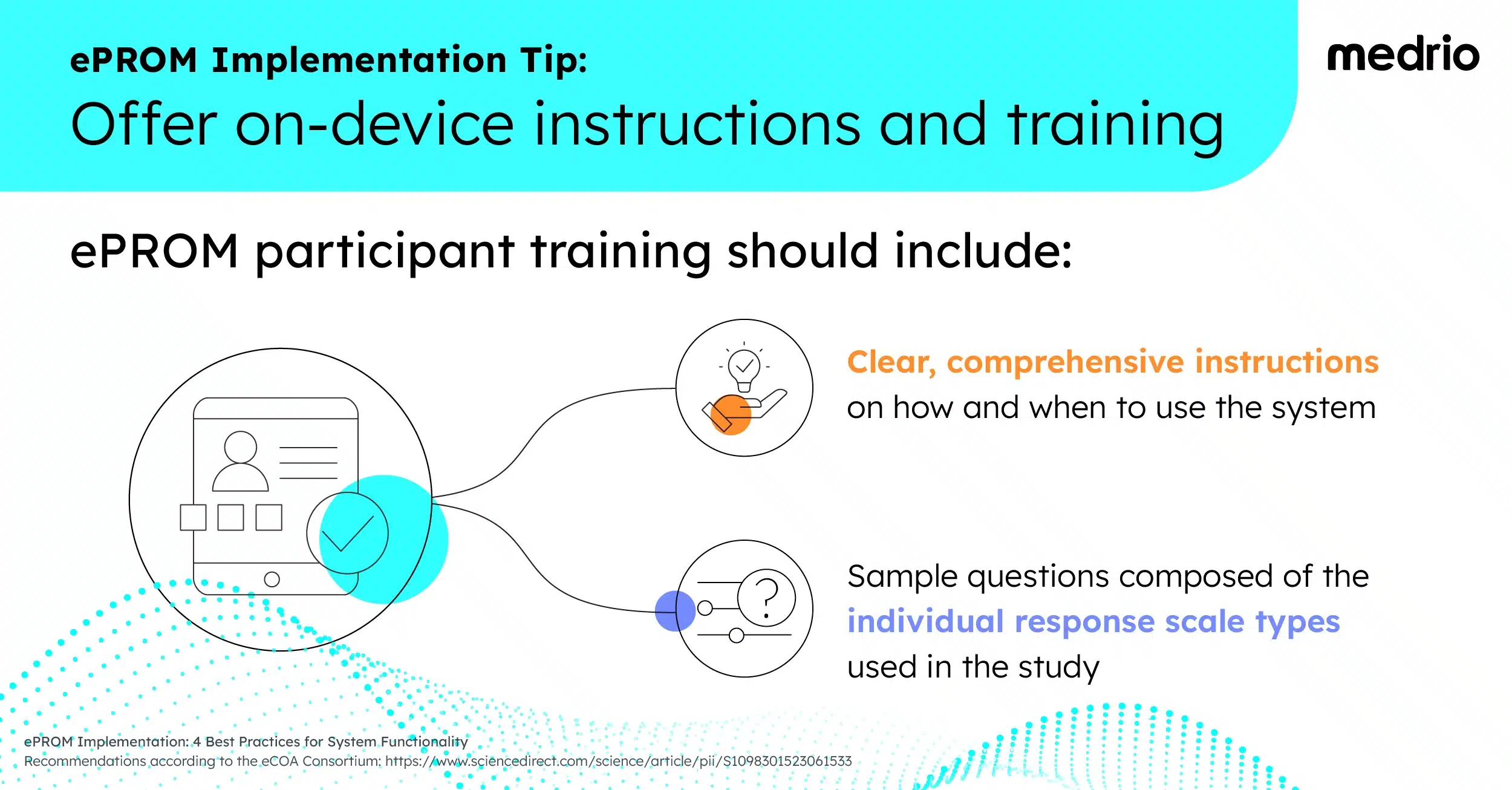Contributing Expert at Medrio: Melissa Newara, VP of Subject Matter Expertise
Until now, patient-reported outcome measures (PROMs) have largely been developed and validated in paper format. Implementing electronic patient-reported outcome measures (ePROMs) requires careful consideration to preserve integrity while ensuring usability and accessibility.
The process of migrating PROMs from paper to electronic format may introduce changes affecting the interpretation of and responses to the measure’s items. Of course, this could compromise measurement comparability among different data capture modes. Therefore, researchers should follow these best practices for a “faithful migration.”
To consolidate and build upon existing electronic PROM recommendations, Melissa Newara, VP of Subject Matter Expertise at Medrio, contributed to an Electronic Clinical Outcome Assessments (eCOA) Consortium article. The article serves as a comprehensive, up-to-date, open-access, single reference for ePROM migration and implementation best practices.
In this blog post, we’ll consider four of the 15 system functionality considerations discussed in the article for a fully informed, standardized approach to ePROM implementation. Following these, along with the other Class 1 practices mentioned in the eCOA Consortium article, should remove the need for additional comparability testing and ensure a faithful migration.
Best practices for ePROM system functionality include:
- Capturing a data point for all items
- Not offering a default response
- Navigating electronic forms
- Offering instructions and training
Read the eCOA Consortium article on ePROM, or talk to our experts to learn about our eCOA/ePRO solution.
Capture a Data Point for All Items
Regulatory bodies cite missing patient-reported outcome (PRO) data as a major challenge for the interpretation of treatment efficacy, which can interfere with PRO-related labeling approvals. This is especially problematic when the measure supports key trial endpoints.
At a base level, ePROM eliminates the risk of accidentally skipping items. It also ensures patients enter data as directed since it eliminates writing in the margins, ambiguous responses, or hastily filling in forms right before a visit.
Researchers can take it a step further by making responses mandatory for items within a measure to eliminate missing data. But there is a potential problem. When respondents reach an item that they wish to skip but cannot, they may:
- Enter inaccurate data to advance through the items.
- Skip the entire measure and miss any subsequent measures for that time point.
Therefore, there may be a tradeoff between complete but possibly inaccurate data and accurate but incomplete data. If items are mandatory, then researchers should take care to use well-developed, fit-for-purpose PROMs. This thoughtfulness will reduce the chances of respondents skipping items.
ePROM implementation tip: Capture a data point for all items
Unlike paper, items within an electronic patient-reported outcome (ePRO) system may be programmed to be skippable or mandatory.
Either way, a data point should be saved within the ePRO data set for each item. This approach will capture either the selected response or confirmation that the respondent intentionally skipped an item.
The eCOA Consortium recommends:
- If skipping is not enabled, the “Next” button should be disabled so that the respondent cannot progress to the next screen without selecting a response. Or, a pop-up message should appear when the respondent selects the “Next” button without selecting a response.
- If skipping is enabled, researchers should implement an edit check asking the respondent to confirm that they are intentionally skipping an item. In this scenario, information should be included in the informed consent process about the importance of PROM data.

Do Not Offer a Default Response Selection
It is important for participants to interact with a response field before proceeding. Otherwise, they may simply accept a default response without checking for accuracy.
Therefore, when a respondent lands on a screen, a response should not be preselected or prepopulated.
ePROM implementation tip: Do not offer a default response selection
Displaying a default value may bias the respondent’s response. Here’s what to do instead:
- For a visual analog scale (VAS), a response should appear only after the respondent interacts with the scale and selects a point on the line.
- For numeric entry, dashes (eg, — –) or a blank field should be presented before the respondent interacts with the device to enter data.
- For date/time entry, the balance between usability and not prompting a particular response requires consideration on a case-by-case basis. For example, providing the current date/time may aid usability for respondents reporting events in real-time.
The above language in the bulleted list is taken directly from “Best Practices for the Electronic Implementation and Migration of Patient-Reported Outcome Measures”

Allow for Easy Navigation
Unlike filling in paper forms, where participants can simply flip back and forth, entering data electronically requires accommodations for navigating between sections.
Not auto-advance to the next screen
After a respondent has selected a response option, the screen should not automatically advance. In order to continue, a respondent should select the “Next” button.
By responding “next”, respondents indicate they:
- Viewed all possible response options
- Had the opportunity to consider their response and make changes if desired
- Chose to progress to the next screen
Provide the ability to go back to the previous screen
At any point during ePROM completion—and before saving and submitting their data for that data entry session—respondents should be able to navigate back to previous screens to:
- Review information
- Change their responses
Therefore, the previous response selection should be presented when a respondent navigates back and forth between items.
ePROM implementation tip: Allow for easy navigation
On paper, respondents can flip back between sections, and review and change their responses as desired.
In order to recreate this experience, an ePROM should be set up to:
- Not auto-advance to next screen: Respondent should select the “Next” button to progress to the following screen.
- Provide the ability to go back to the previous screen: Respondents should be able to navigate back to previous screens to review and change responses as desired.

Offer On-Device ePRO Instructions and Training for Participants
Participant training is central to the success of ePRO systems.
In the ISR Reports’ eCOA/ePRO Benchmarking and Market Dynamics (5th Ed.), 18% of respondents mentioned that there needs to be a cohesive strategy to ensure patient compliance and engagement with diaries.
Respondents also frequently mentioned the need to offer patient training and support for a variety of devices, including bring your own device (BYOD) offerings.
Of course, site staff must first receive adequate training, according to the FDA computerized systems guidance document Computerized Systems Used in Clinical Investigations, so they can introduce participants to the ePRO system. Ensuring participants are comfortable with the technology will improve their willingness and ability to use the system.
ePROM implementation tip: Offer on-device instructions and participant training
According to the eCOA Consortium, training should be compulsory for the participant on the first use or setup of their account and remain accessible throughout the entire study.
Training for participants should include:
- Clear, comprehensive instructions on how and when to use the system
- Sample questions composed of, at least, the individual response scale types used in the study, for example numeric rating scale [NRS], visual analog scale [VAS], and numeric entry
To complete this training, questions can be of a neutral topic, such as the weather. This approach allows the participants to familiarize themselves with the response scale types versus item content.

Support Electronic Patient Reported Outcome Measures with the Right ePRO Technology
According to the above ISR Report, it’s predicted that 64% of clinical trials over the next two years will include an eCOA/ePRO component.
Medrio eCOA/ePRO technology, however, goes beyond these baseline improvements.
With a user-friendly interface and flexible data capture options, Medrio improves participant engagement and compliance rates, so you can focus on collecting high-quality clinical data to help secure FDA clearance. Our web-based solution empowers participants, clinicians, and observers to conveniently and accurately report outcomes, enhancing data quality and study efficiency.
Want to hear more from Medrio’s SMEs? Read the eCOA Consortium article, written in part by Medrio’s Melissa Newara, or talk to our experts to get answers to your ePRO questions.



